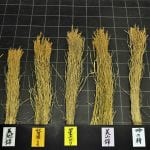The sake of the Tohoku region in Japan has been showered with much-deserved attention over the past five to ten years. Certainly, it is worth it to learn a bit more about the area, and why their sake is so highly regarded.
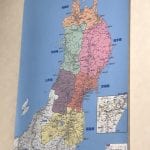 Regionality in the sake world is fascinating to study, but it may be a bit further than most people want to go. Honjozo, junmai daiginjo, and “the glass in front in front of me now” may be plenty of sake study for most folks. And that’s fine; it is all about enjoyment after all. But like most things sake, a little study goes a long, long way. And it might not be so interesting to start by learning 47 new prefecture place names. But just one or two big-ass regions? Sure, we can do that.
Regionality in the sake world is fascinating to study, but it may be a bit further than most people want to go. Honjozo, junmai daiginjo, and “the glass in front in front of me now” may be plenty of sake study for most folks. And that’s fine; it is all about enjoyment after all. But like most things sake, a little study goes a long, long way. And it might not be so interesting to start by learning 47 new prefecture place names. But just one or two big-ass regions? Sure, we can do that.
If we are going to talk region, by all rights we should start with the Kansai region, wherein sits Hyogo (and therein Nada), Kyoto (and within it Fushimi), and Osaka. The first two (Nada and Fushimi) are the largest producing regions of sake in the country, and historically the most significant. But since Tohoku is “big in Japan” right about now, let us start there.
Where is the Tohoku region? It’s easy to remember: it is the top third of the main island of Japan. It consists of six of Japan’s 47 prefectures, all larger than average. (The cheap-looking photo was taken in the office of the Tohoku region Tax Office in the city of Sendai, Miyagi Prefecture, when I was up there as a judge last week.) Those are Aomori, Akita, Iwate, Yamagata, Miyagi and Fukushima.
Let us look at why the sake of Tohoku – as a region overall – is so popular, and also at what the main identifying characteristics of the various prefectures are.
Perhaps one of the biggest reasons the sake of Tohoku is so well known is the region’s success in the Zenkoku Shinshu Kampyoukai, or “National New Sake Tasting Competion,” held each May in Japan. (The official English translation is the Japan Sake Awards, but I like my unofficial but more direct translation better.)
Sake brewed just for this contest (i.e. not normal sake you can buy at the store) is submitted and blindly tasted and judged. While many consumers do not even know this contest exists, it is a very prestigious event in the sake world. And over the past ten or fifteen years, Tohoku sake has done very, very well.
In particular, Fukushima Prefecture has won more gold medals than any other prefecture for the last four years in a row, and in seven out of the last ten years. Only vaunted Niigata and Tohoku 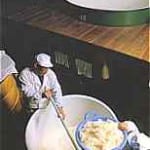 neighbor Yamagata are close to that performance. This contest demonstrates brewers’ command of the highest levels of brewing skill, and as the results might suggest, currently this brings lots of attention to the sake of Tohoku.
neighbor Yamagata are close to that performance. This contest demonstrates brewers’ command of the highest levels of brewing skill, and as the results might suggest, currently this brings lots of attention to the sake of Tohoku.
The Japan national competition is one big one, but there are a handful of other competitions both in and outside of Japan to which many people pay attention. If you look at the results of these blind tasting competitions, there are a handful of brands that very often rise to the top. Quite often, these are of a light, fine-grained, bright and aromatic style. And this style is precisely what Tohoku does well.
While the style of sake that often does well in such contests is far, oh-so-very-far, from the be-all end-all of what makes a good sake, or what everyone likes, the results do indicate what is consistently popular based on one figure of merit.
But the point is that the style of sake made by many of the brewers in the Tohoku region is that kind of fine-grained, light and clean style; it is a style that is approachable and likeable. And this is yet another explanation of why the region is popular and worthy of attention: it makes the kind of sake that people these days like.
It is extremely important to emphasize that this is only one style. Many sake fans from the western half of Japan would find Tohoku sake too light, with no body, umami, or earthiness, and perhaps find it challenging to pair with food – especially in comparison to the rich, broad, umami-laden sake of their own region. We are only looking at one snapshot of all the great sake that is out there.
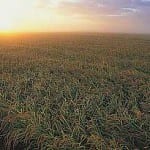 What makes the sake of the region taste this way? Many things, of course. One is climate. It’s colder up there, and when you brew and subsequently mature at colder temperatures, you end up with lighter, cleaner sake. Higher temperatures give fuller bodies. Think lagers and ales.
What makes the sake of the region taste this way? Many things, of course. One is climate. It’s colder up there, and when you brew and subsequently mature at colder temperatures, you end up with lighter, cleaner sake. Higher temperatures give fuller bodies. Think lagers and ales.
Next would be the support of the prefectural governments. While all regions in Japan have this to some degree, Fukushima, Yamagata, and Akita in particular have very active sake research organizations. These are run by the local governmental industrial research center or tax administration, and crank out sake-brewing technology, new rice strains and new yeast strains that constantly and consistently raise the Tohoku bar.
Then there is rice itself, of course. Most of the Tohoku prefectures are large rice-producing prefectures as well. While most of this is for eating, they all produce plenty of one variety or another of sake rice. The aforementioned colder climate means the indigenous strains of rice are generally smaller than their western-Japan counterparts, leading to the more narrow flavor profiles of the area.
Each of the six prefectures of the Tohoku region has plenty that could be said bout them. A “sake readers digest” version might look something like the below.
Fukushima has about 70 active breweries, ensuring a wide range of styles, and three distinct geographies: an oceanside, planes and mountains, with most breweries in the prefecture located in the last of these. Miyagi has about 40 breweries, and an inordinately large amount of what they make is junmai. Yamagata right next door makes just as inordinately large amount of ginjo compared to other types, and has lots of fragrant, light sake coming from the 40 or so kura there. Iwate is the home of the most prominent and accomplished guild of toji (master brewers), the Nanbu guild, but only 25 active kura. Much of their sake is light, but a few rich, reverberating deep sake are made there too.Akita sake, made by the 50-odd active breweries there, is often rich but seems quite fine-grained to me, with of course the requisite exceptions. And at the very top of the region is Aomori, with 20 breweries making a richer, sweeter style than the rest of the region.
While the above-described styles are of course vague, with exceptions and variation across each prefecture, the region in general does confirm to the light, crisp, aromatic style that is quite popular today. And while each prefecture is much deserving of detailed study, knowing a bit about the region goes along way too. It is, after all, Tohoku time.
* * *
Sake Professional Course
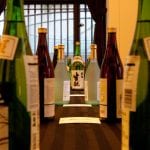 The next Sake Professional Course will be held in Las Vegas, Nevada on November 27 to 29. As of today, only three (3) seats remain open.
The next Sake Professional Course will be held in Las Vegas, Nevada on November 27 to 29. As of today, only three (3) seats remain open.
The content of this intensive sake course will be identical to that of the Sake Professional Course held each January in Japan. The course is recognized by the Sake Education Council, and those that complete it will be qualified to take the exam for Certified Sake Specialist, which will be offered on the evening of the last day of the course.
Learn more about the course here. You can read Testimonials from past participants here.
If you would like to make a reservation or to be placed on the notification list, please send an email to that purport to sakeguy@gol.com.





